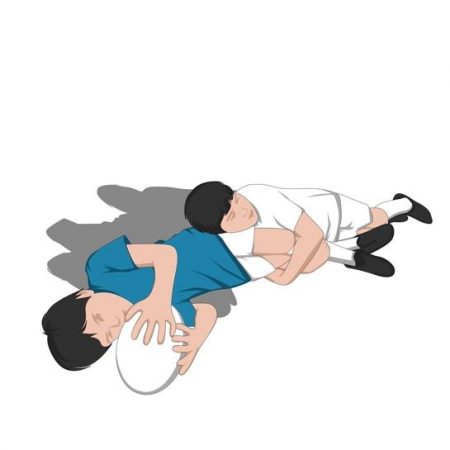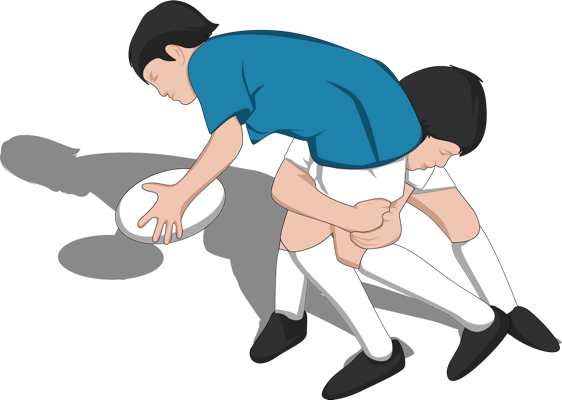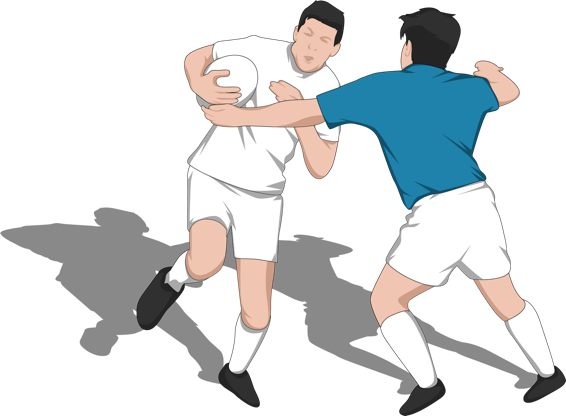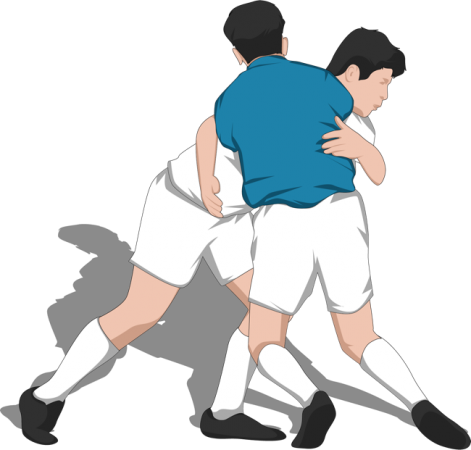Dan Cottrell, editor of Rugby Coach Weekly, talks you through how to relearn your tackle technique
The tackle height laws will provide coaches with an evolutionary rather than revolutionary change. That’s because most coaches are probably already coaching tackle technique close to the correct height.
Let’s concentrate on how the law variations will impact tackle training in this blog.
Read more: What is the new tackle height law? Explained
NO CHANGE FOR SOME
For any coach working with up to U11s, there won’t be any adjustments. At U9s, in particular, no one is supposed to grab for the ball, so there’s no technique change.
What will change is the chance to create good habits with excellent technical coaching.
Related: All the reaction as Owen Farrell initially cleared of ban after red card v Wales
START AT THE END OF TACKLE TECHNIQUE
Most high tackles at these ages are due to poor athletic profiles, fear, and insufficient game awareness to make tackles.
Therefore, as they should always do, coaches must give players lots of chances to learn and hone tackle technique every session. This begins with a good curriculum. Non-academics are sometimes nervous about the word curriculum, but it is the best way to express what you are doing literally “in the course of a race”: how to get from the start to the finish line.
A good approach is to think of the tackle from back to front. A good back end of the tackle has the ball carrier on the ground with the tackler in a tight grip. That means their head won’t have left the ball carrier’s body from the moment the shoulder engaged.
 < A good finish to a tackle, with a tight grip and, more importantly, the head very tight to the ball carrier’s body.
< A good finish to a tackle, with a tight grip and, more importantly, the head very tight to the ball carrier’s body.
To do this, the tackler will have a tight grip, pulling themselves into the ball carrier. Contact is made on the soft belly (below the sternum) or the thighs. Either position is more likely to lead to the ball carrier being toppled. At this point, the feet should be in contact with the ground and active.
Read more: World Rugby appeal Owen Farrell decision
We are nearing the front section of the tackle now. The tackler must get close enough to make the tackle. While there is a perfect position to be in, which is the same foot, same shoulder making contact with the ball carrier, there are still imperfect ways of starting a good tackle. The tackler needs to focus on the finish, and if they are in a good position to tackle, it is more likely they will make a more dominant tackle.
 < This is an ideal foot position at the beginning of the tackle. But a good tackle can still happen even if the foot isn’t in front. As long as the tackler can find a tight grip, and drive the legs, they can complete a good tackle.
< This is an ideal foot position at the beginning of the tackle. But a good tackle can still happen even if the foot isn’t in front. As long as the tackler can find a tight grip, and drive the legs, they can complete a good tackle.
THE INBETWEENERS
From around U12s to U15s, good or bad tackle height habits won’t be ingrained.
You will see that many players used to make what we might regard as high tackles under the new regime. However, most of those “high tackles” will have been passive. In other words, the player won’t have raced up to make the tackle. They are more likely to be soaking up the ball carrier’s momentum and not vice versa.
 < This would have been just about okay in the old days! But we need to change this habit.
< This would have been just about okay in the old days! But we need to change this habit.
Again, it’s time to go back to a curriculum for this age group, with every session focusing on one small part of the jigsaw. They can return to puzzle piece every training cycle.
For example, a key part of adjusting the height is the footwork before the tackle. While the players will use this footwork in every session, coaches should make a special effort to focus on this aspect at least once every three to four weeks.
LET’S GET PHYSICAL
Once players move into youth age groups, they are far more invested in the game’s physicality. They will measure themselves on how they dominate in the tackle.
In the past, coaches will have spent more time on defensive systems than tackle technique. This will likely lead to poor tackle heights, especially as the players speed forward to reduce the attacking team’s time and space.
Pre-season training for youth and senior teams should go back to the basics of making technically strong tackles. This will be at the expense of defensive systems training.
Plus, to bend to the right height, a further cost will be reduced speed off the line.
 < A typical old-style fast line speed tackle, where the tackler finds it hard to change their height at the last moment.
< A typical old-style fast line speed tackle, where the tackler finds it hard to change their height at the last moment.
OLD DOGS CAN CHANGE
Old dogs, that is, senior players, can learn new tricks…if motivated to do so.
While some will be keen to change, the coach must persuade other players to change their tackle habits.
One way is to make a song-and-dance about better technique. Good coaches praise lower tackles and reward players who tackle at the right height.
And here’s a good little trick: don’t make the wrong height a bad mistake. Play it down. Just focus on the positives instead. Players will fear change if they think their errors are catastrophic.
Most mishits will be penalties, nothing worse. Training is always littered with errors. If coaches pounced on every fault, like tackle height, handling or decision-making, no player would want to return.
In the next “blog”, we will focus on attack training.
Download the digital edition of Rugby World straight to your tablet or subscribe to the print edition to get the magazine delivered to your door.
Follow Rugby World on Facebook, Instagram and Twitter.





